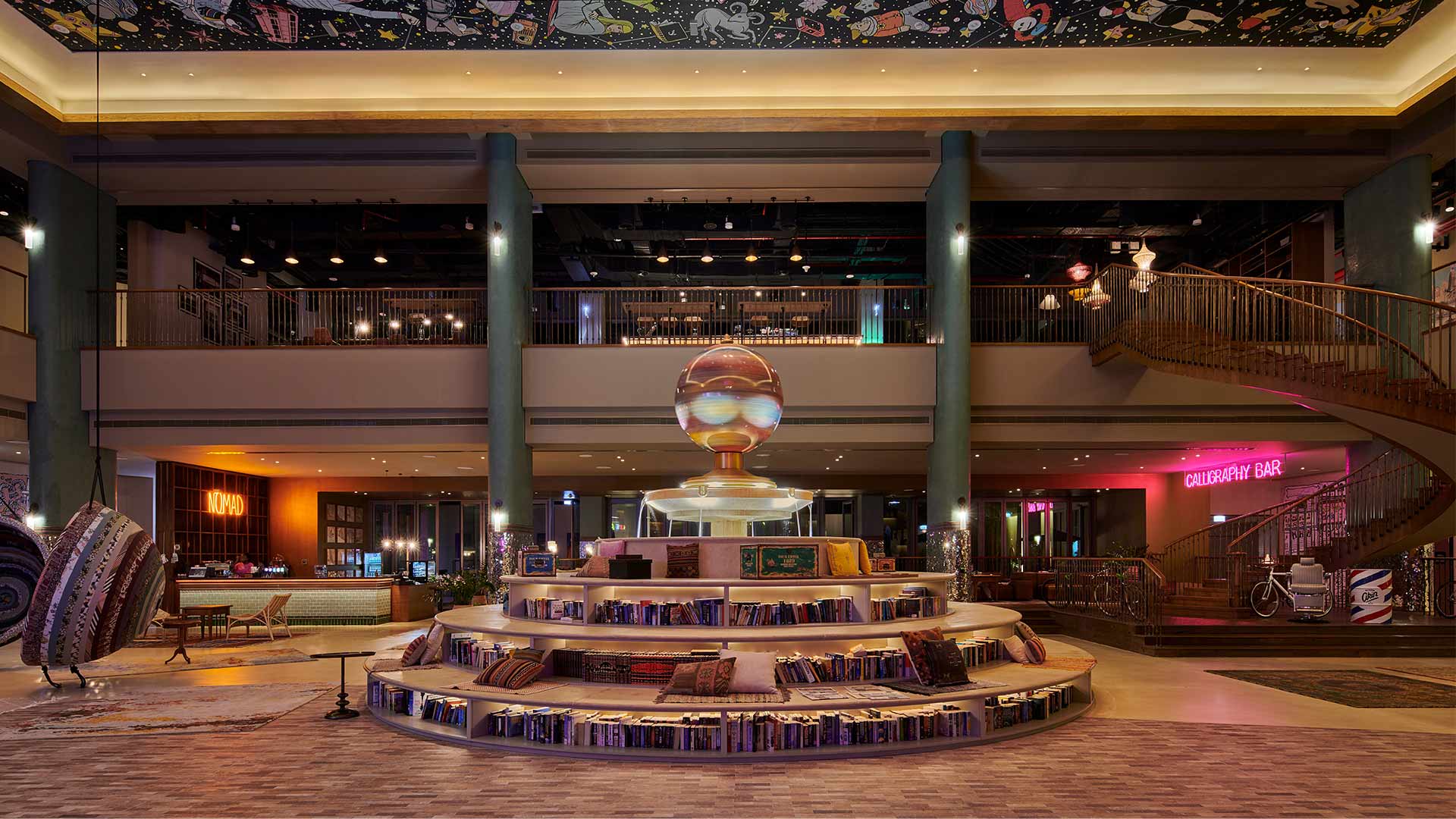Hospitality lighting has a whole new meaning
It’s heartening to see the hospitality industry move away from a style-over-substance approach to lighting design. Beautiful light fittings will always be important, but great hospitality lighting is as much about what you can’t see. Time and time again, it’s the quality of light that makes a scheme something special. By layering different light sources, we can transform the way a guest sees, experiences and ultimately remembers that space. Applying this level of detail is also how we move beyond aesthetic decisions towards a more holistic mindset, where design, health and wellbeing, technology and sustainability all play their role.
Mastering the subtleties and complexities of a hospitality project is about getting the detail right from the outset. It starts with the creative aspirations for a project and a desire to carve out something distinctive. For the lighting designer, it ends with a level of finesse that allows you to change the ambience and functionality of a space with a simple flick of switch. This emphasis on finesse is what hospitality schemes need right now as guest-specific needs dictate the design agenda and success is governed by what a brand does to engage its customers and help them feel at ease.
Blended Spaces
As the way we live, work and travel has evolved over the last couple of years, so has the need for multifunctional hospitality settings. The influx of new schemes coming through are vibrant and full of character; locality, design, gastronomy, art and culture all matter. The industry has gained fresh impetus from this shift – traditional hotel and restaurant concepts have been turned on their head and owners have embraced new ways to diversify their revenue stream. Light is a valuable tool in multiuse spaces. It can evoke different settings and emotional responses, transforming an intimate, low uniformity, high contrast scheme into a bright and comfortable location to work or relax in during the day. In lobbies or open plan areas where working lounges, break out spaces, games rooms and relaxed dining areas all merge into one, layers of light and lighting control play a key role in achieving functional transitions.
Health and Wellbeing
Much has been written about how the body’s natural circadian rhythm helps to regulate our sleep patterns. In the lighting industry, this means designers are taking time to observe the impact light has on a person’s hormonal function to help them create better lighting systems, which are tailored to the individual. In a hospitality setting where comfort and rest are so important, a proficient controls system is crucial to achieving a harmonious relationship between natural sunlight and artificial light. Controls systems that allow for daylight sensors and automated time clocks can help to create optimum conditions for guests. Automatic time clocks will help change scenes through seasons and even throughout the course of a 24-hour cycle – this level of flexibility is particularly important in a hotel scheme where you’re catering for guests arriving from multiple time zones and with different intentions for their stay.
Bespoke Experiences
Personalisation is making waves in the hospitality sector. Technology and connectivity are increasingly present in our lives, meaning that the options for a personalised guest stay are growing. As technology can allow hotel guests to check in and access their rooms via a mobile device, it’s now possible for a guest to pre-set the lighting before they even enter their hotel room, and then save their preferences as they move from location to location. People can be assigned profiles that link to their devices, allowing a hotel to see when they have booked their stay or arrived on the premises. Via this profile, a guest can also ensure that the lighting in their room is pre-set in alignment with their preference.
Responsible Design
Sustainability is top of everyone’s agenda, particularly when it comes to making considered choices about lighting. This doesn’t mean we have to compromise – lighting hospitality spaces can be both creative and functional. Concentrating on dark as much as light is important. Steering away from ‘lighting for lighting’s sake’ and illuminating space only where it’s needed can reduce emissions, waste and ultimately, cost. With amenity spaces being used for a variety of functions throughout the day, installing lighting controls and using apps to determine lighting scenes can also contribute to a reduction in energy use.
Images © Chris Goldstraw


